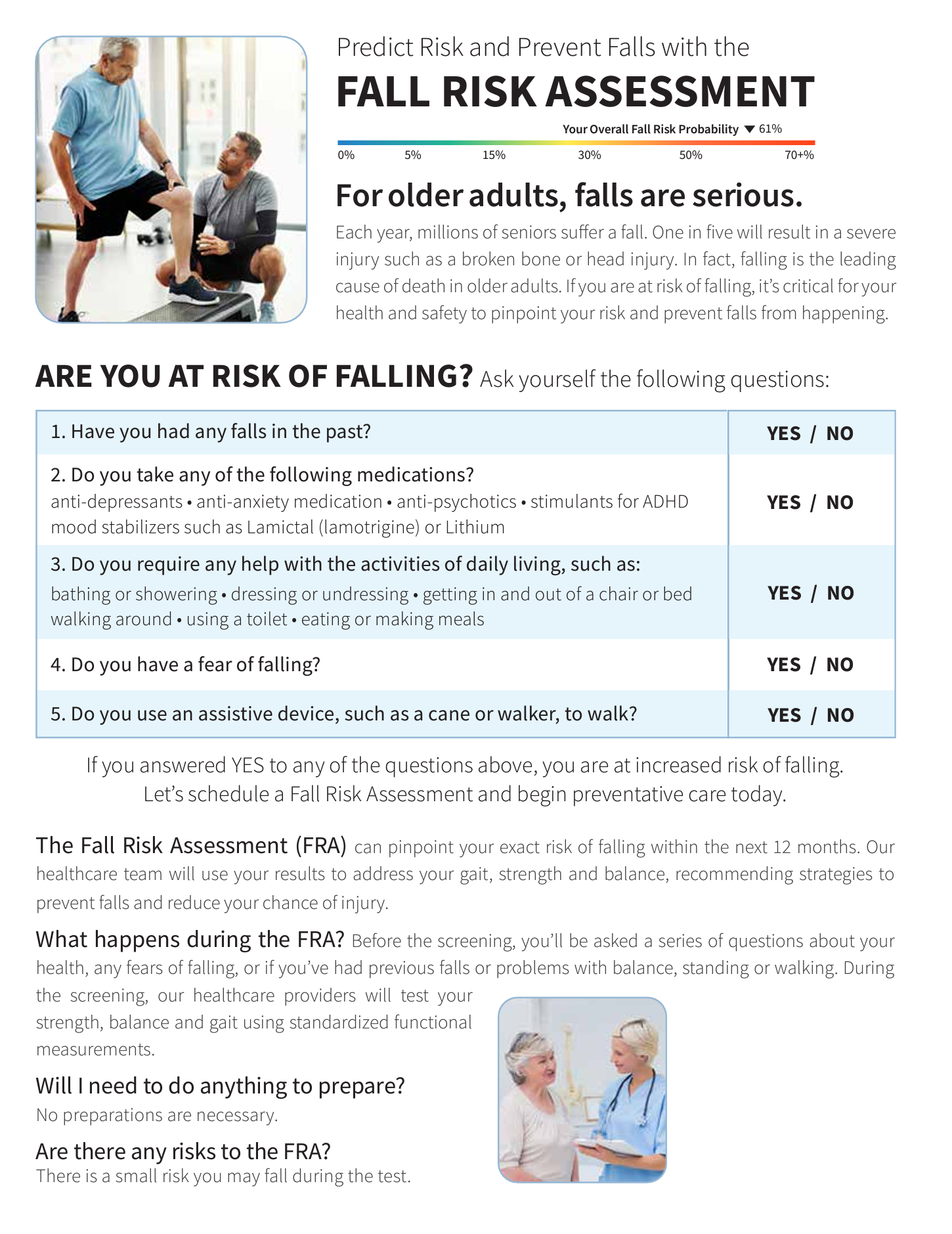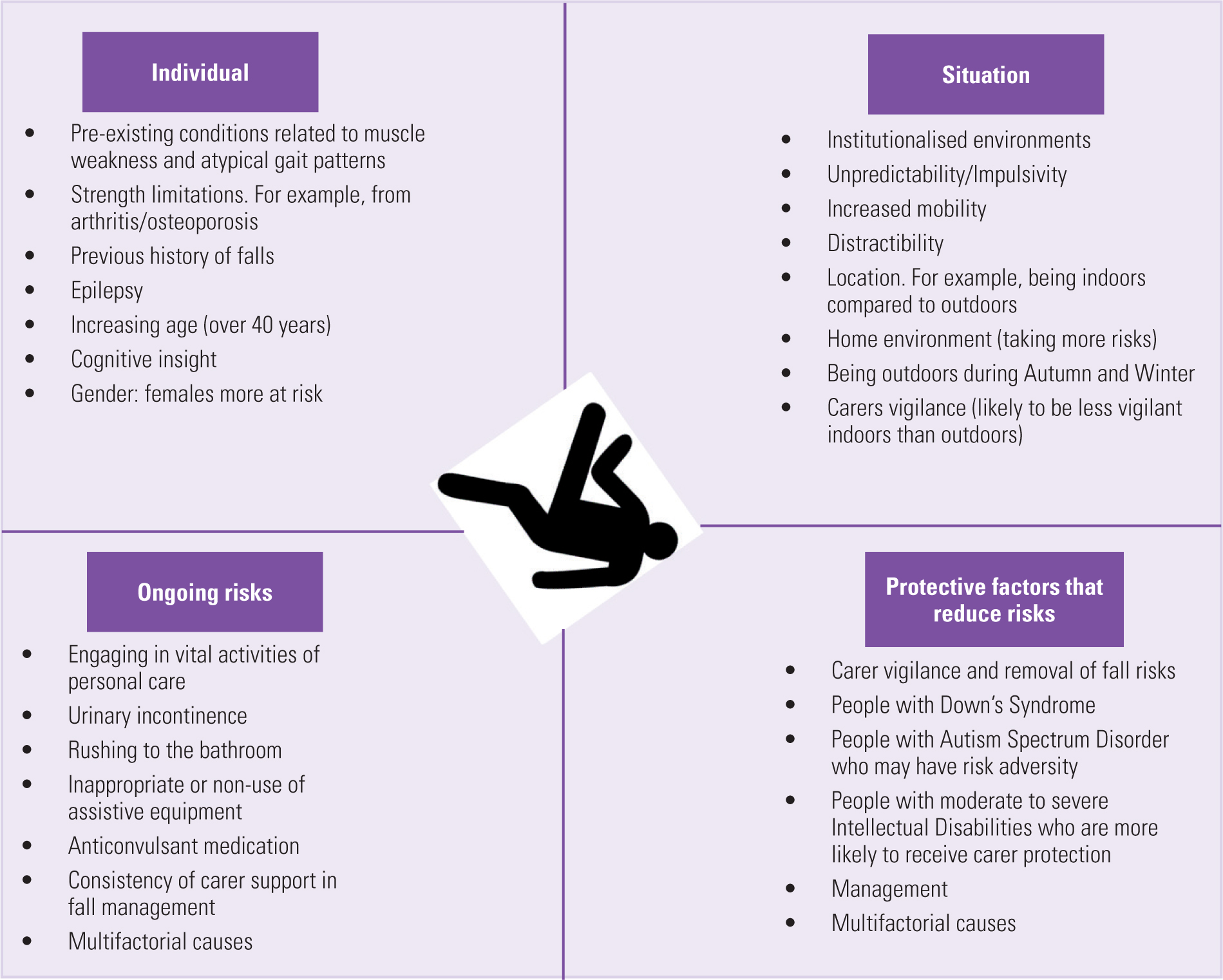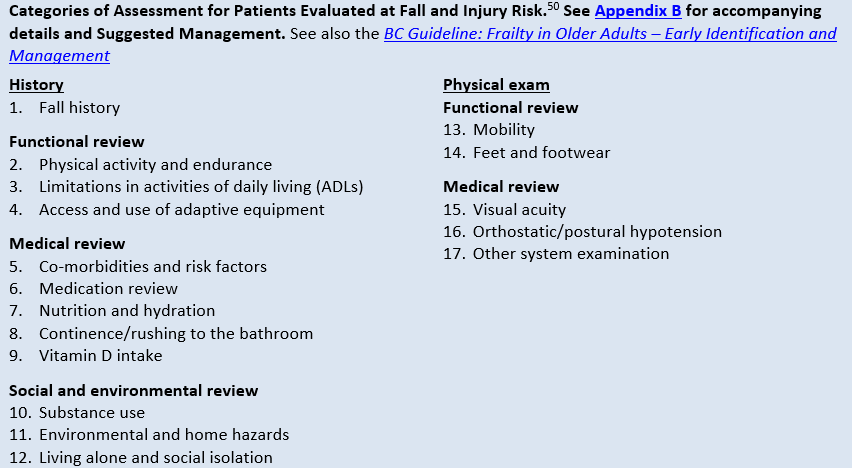The smart Trick of Dementia Fall Risk That Nobody is Talking About
How Dementia Fall Risk can Save You Time, Stress, and Money.
Table of ContentsExcitement About Dementia Fall RiskThe Basic Principles Of Dementia Fall Risk Indicators on Dementia Fall Risk You Need To KnowSome Known Details About Dementia Fall Risk
A fall danger analysis checks to see exactly how most likely it is that you will fall. The analysis usually consists of: This consists of a series of concerns concerning your general wellness and if you have actually had previous falls or issues with equilibrium, standing, and/or walking.Interventions are suggestions that may reduce your threat of dropping. STEADI consists of 3 actions: you for your threat of dropping for your danger variables that can be boosted to attempt to protect against drops (for instance, equilibrium issues, impaired vision) to decrease your risk of falling by using effective strategies (for example, giving education and learning and sources), you may be asked numerous concerns including: Have you fallen in the previous year? Are you stressed regarding dropping?
If it takes you 12 secs or even more, it might imply you are at greater danger for a fall. This examination checks stamina and balance.
The positions will certainly get more difficult as you go. Stand with your feet side-by-side. Relocate one foot halfway onward, so the instep is touching the huge toe of your various other foot. Relocate one foot fully before the other, so the toes are touching the heel of your various other foot.
Dementia Fall Risk Fundamentals Explained
Most drops occur as a result of several contributing variables; as a result, managing the risk of falling starts with recognizing the factors that add to fall risk - Dementia Fall Risk. A few of the most appropriate danger elements include: History of prior fallsChronic medical conditionsAcute illnessImpaired gait and balance, lower extremity weaknessCognitive impairmentChanges in visionCertain high-risk medications and polypharmacyEnvironmental elements can likewise enhance the danger for falls, including: Insufficient lightingUneven or damaged flooringWet or slippery floorsMissing or damaged hand rails and grab barsDamaged or improperly fitted equipment, such as beds, mobility devices, or walkersImproper use assistive devicesInadequate guidance of individuals staying in the NF, consisting of those who exhibit hostile behaviorsA effective loss threat monitoring program calls for a thorough clinical analysis, with input from all participants of the interdisciplinary team

The care strategy need to additionally include treatments that are system-based, such as those that promote a risk-free environment (appropriate lighting, hand rails, order bars, and so on). The efficiency of the interventions ought to be evaluated periodically, and the treatment plan revised as essential to mirror modifications in the fall risk analysis. Carrying out a fall risk monitoring system utilizing evidence-based best practice can lower the occurrence of falls in the NF, while restricting the potential for fall-related injuries.
Getting The Dementia Fall Risk To Work
The AGS/BGS standard recommends screening all grownups aged 65 years and older for autumn threat yearly. This testing includes asking individuals whether they have actually fallen 2 or more times in the previous year or looked for medical navigate to this website focus for a fall, or, if they have actually not fallen, whether they really feel unsteady when strolling.
Individuals who have dropped as soon as without injury needs to have their balance and gait reviewed; those with stride or balance irregularities need to receive extra analysis. A background of 1 fall without injury and without gait or equilibrium troubles does not warrant further evaluation beyond ongoing yearly fall risk screening. Dementia Fall Risk. An autumn threat assessment is required as part of useful site the Welcome to Medicare evaluation

Dementia Fall Risk Fundamentals Explained
Documenting a drops history is one of the quality signs for autumn avoidance and monitoring. Psychoactive drugs in specific are independent forecasters of drops.
Postural hypotension can commonly be reduced by reducing the dose of blood pressurelowering medications and/or quiting medications that have orthostatic hypotension as an adverse effects. Use above-the-knee assistance pipe and sleeping with the head of the bed raised may likewise reduce postural reductions in blood pressure. The advisable elements of a fall-focused physical assessment are received Box 1.

A pull time better than or equal to 12 seconds suggests high autumn threat. The 30-Second Chair Stand test examines reduced extremity toughness and equilibrium. Being unable to stand up from a chair of knee height without utilizing one's arms shows increased fall risk. The 4-Stage Balance test analyzes static equilibrium by having the client stand in 4 positions, each progressively a lot more tough.